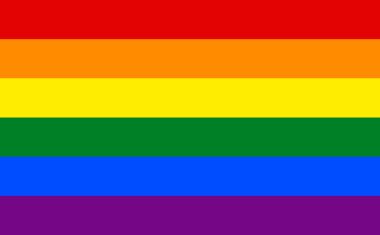We are celebrating Pride here at UNDERU and donning some of our favourite men's underwear...
June is Pride month, a time of celebration for the LGBT community worldwide. And every year, cities all around the world organize month-long festivities to commemorate and support sexual and gender minorities' liberation. Here at UNDERU we are pulling out our favourite men's underwear ready for this years festival.
While some have called the festivities raucous or overly sexual, such criticisms are really just the recycling of old stereotypes historically used to demonise the LGBT community. The truth is that the festivities are a raucous, glittering expression of love and tolerance that originated from the Stonewall Riots of 1969. An event that shaped the LGBT movement and pushed the struggle for equal rights into the forefront.
But how much do we really know about the history of this now-global phenomenon? Before you pull out your favourite men's underwear take a look at our Pride facts below...
1. Pride commemorates the Stonewall Inn riots.
In 1969, it was still illegal for LGBT people to meet in public places, and bars that catered to the LGBT community were regularly targeted by law enforcement. Homosexuality was even still classified as a mental disorder by the American Psychological Association.
The night of the riot, the Stonewall Inn was full of its typical LGBT-friendly clientele. The police were aware that LGBT people frequented the bar and would conduct raids often. Many times those raids led to the arrests of LGBT people trying to congregate, and police brutality was not uncommon. On June 28, 1969, however, when police attempted to empty the bar, the LGBT individuals fought back, igniting three days of riots and protests that launched the modern-day LGBT rights movement.
2. Transgender women of colour played a key role in Pride's inception.
Sylvia Rivera, a bisexual transgender woman of Puerto Rican and Venezuelan decent, and Marsha P. Johnson, a black transgender woman, are both credited with being at the forefront of the Stonewall conflict. Unfortunately, Rivera was eventually pushed out of the gay movement due to her outspoken attempts to rally LGBT support. Despite their importance early on, many people have since forgotten the role gender non-conforming people of colour and sex workers took on in the early LGBT movement. This has taken on increased importance amid recent accusations that the movement has become white washed.
3. The first Pride parade was co-organized by a bisexual woman.
After the riots, bisexual activist Brenda Howard organised a liberation day march on Christopher Street to commemorate the event. A year later, Howard was credited with co-organising the first Pride march, and with coming up with the idea of creating a week-long Pride festival.
4. There is a transgender Pride.
Cities around the world have special transgender Pride events for those in the trans and gender non-conforming community. Transgender individuals go through unique aggressions and suffer from some of the highest rates of psychical assaults in the entire LGBT community. The elevation of their struggle for equal rights has been called the civil rights struggle of this generation by up-and-coming transgender activists and writers, including Thomas McBee.
5. There is a black Pride.
For reasons similar to those behind the concept of transgender Pride, there is a black Pride in many cities, which specifically serves gay people of colour. Gay people of colour have felt alienated by the movement that has, at times, appeared to cater more to the white majority than the entire community. Black Pride events are an attempt to showcase the diversity of the LGBT community while specifically highlighting queer activists of colour.
6. The original Pride flag included two additional colours.
The pride flag was originally created in the 1970s. The flag, which was designed in San Francisco by artist Gilbert Baker. Demand for the flag rose after openly gay San Francisco City Supervisor Harvey Milk was assassinated.
The original flag was emblazoned with eight different colours, each with its own meaning. Hot pink for sex, red for life, orange for healing, yellow for sun, green for nature. Turquoise for the arts, indigo for harmony and violet for spirit. Because it was cheaper to produce with fewer colours, later editions of the flag were created with 6 colours.
















